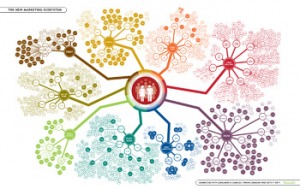I was catching up with Avinash (@avinashraghava) earlier today and we were chatting about product startups in the country. If you’ve been in this ecosystem, and seen the evolution of product companies, some interesting changes happened over the past few years.
Back in 2001, at AdventNet, the Product Manager role was created, and so was the Usability Engineer role (which were primarily UX Designers). There used to be debates about project managers and product managers and I’ve had a chance to see these debates well into 2007-08.
While interviewing with Yahoo in 2004, the recruiter was not quite sure of what they wanted me to highlight (since i didn’t come from a software programming background) and asked “have you taken any short courses on programming languages, that you can highlight in your resume?”. I had to politely decline modifying the resume – it would’ve also meant not highlighting the UX-related work I’d done while at AdventNet. Guess that was a time when the tech world was still coming to grips with the need for Product Managers in product companies.
Those days, Yahoo had a good bunch of UX Designers, and not enough companies felt the need to have good UX Designers. I was lucky and fortunate to work with some very smart designers while building products such as Yahoo! Maps, Yahoo! Local etc. Those days, there were conversations about 2-pizza teams (at amazon), 3-people teams (PM-UX-Dev at google) and emerging agile teams.
By 2006-07, the ecosystem had recognized they needed product managers and many product companies started looking for pm talent. And they were getting started on hiring User Experience Designers.
When I moved to InMobi in 2008, we built the PM team, the UX team and also realized that the way to build great products was by leveraging the data we had, to generate analytics and insights. Helping the user with understanding of what’s happening in the system with respect to their work/needs was a great way to get the user engaged with the system. This starts initially (at low data scale) with basic reporting tools – tables, charts etc. As the data grows (and boy, does it grow fast!), these tools have to evolve into more sophisticated ones. The decision systems also crunch lots more data to generate their outputs. And who better to help with those than data scientists.
By this time, most companies and the recruiting world were familiar with and looking to hire UX designers.
Getting a lead on understanding data and building newer insights helps Product Managers think about smarter ways to solve user and business problems. It also helps UX Designers to visualize newer ways to portray information as well as overall experience. It’s no surprise that companies are now looking to hire Data Scientists quite early in the game, especially the ones that want to build world class products. The VCs are also paving the way with roles like Data Scientist in Residence.
I did a small experiment last year, looking through the websites of various companies in the data services spectrum (data warehousing / analytics / data consulting etc). I went through their archived websites of 2008-09 and saw that terminology such as “data warehousing”, “data analytics” etc had given way to “Big Data” starting 2010. I think this is an important trend to understand – tech businesses are prolific at creating data. To leverage that, they need a pretty significant set of people who can understand and make sense out of it.
Now that the world’s all mobile + tablet, the new challenge is “user acquisition”. Growth hacking anyone?


